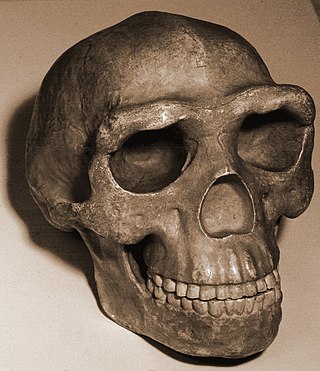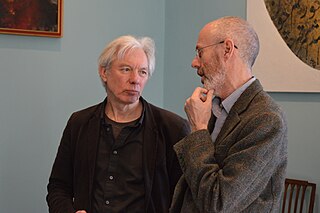Births
| | This section is empty. You can help by adding to it. (July 2010) |
| |||
|---|---|---|---|
| +... | |||
Below are notable events in archaeology that occurred in 1923.
| | This section is empty. You can help by adding to it. (July 2010) |

Davidson Black, was a Canadian paleoanthropologist, best known for his naming of Sinanthropus pekinensis. He was Chairman of the Geological Survey of China and a Fellow of the Royal Society. He was known as 步達生 in China.

Peking Man is a subspecies of H. erectus which inhabited what is now northern China during the Middle Pleistocene. Its fossils have been found in a cave some 50 km (31 mi) southwest of Beijing, known as the Zhoukoudian Peking Man Site. The first fossil, a tooth, was discovered in 1921, and Zhoukoudian has since become the most productive H. erectus site in the world. Peking Man was instrumental in the foundation of Chinese anthropology, and fostered an important dialogue between Western and Eastern science. Peking Man became the centre of anthropological discussion, and was classified as a direct human ancestor, propping up the Out of Asia theory that humans evolved in Asia.
Paleoanthropology or paleo-anthropology is a branch of paleontology and anthropology which seeks to understand the early development of anatomically modern humans, a process known as hominization, through the reconstruction of evolutionary kinship lines within the family Hominidae, working from biological evidence and cultural evidence.
Below are notable events in archaeology that occurred in 1926.

Zhoukoudian Peking Man Site (周口店北京人遗址), also romanized as Choukoutien, is a cave system in suburban Fangshan District, Beijing. It has yielded many archaeological discoveries, including one of the first specimens of Homo erectus, dubbed Peking Man, and a fine assemblage of bones of the giant short-faced hyena Pachycrocuta brevirostris.

Johan Gunnar Andersson was a Swedish archaeologist, geomorphologist, and paleontologist who was closely associated with the beginnings of Chinese archaeology in the 1920s.
Below are notable events in archaeology that occurred in 1921.
The year 1966 in archaeology involved some significant events.
Below are notable events in archaeology that occurred in 1920.
Below are notable events in archaeology that occurred in 1928.
Below are notable events in archaeology that occurred in 1929.
Below are notable events in archaeology that occurred in 1935.
Below are notable events in archaeology that occurred in 1950.

The Sardis Synagogue is a former ancient Jewish synagogue, that was discovered in the modern-day town of Sardis, in the Manisa Province, in the Aegean Region of western Turkey. The former synagogue building is now an archaeological site and Jewish museum. The archaeological site is the largest Jewish site known from antiquity.

Walter Willis Granger was an American vertebrate paleontologist who participated in important fossil explorations in the United States, Egypt, China and Mongolia.

Ehud Netzer was an Israeli architect, archaeologist and educator, known for his extensive excavations at Herodium, where in 2007 he found the tomb of Herod the Great; and the discovery of a structure defined by Netzer as a synagogue, which if true would be the oldest one ever found.

The Museum of Evolution of Uppsala University is a natural history museum in Sweden, and holds Scandinavia's largest fossil collection of dinosaurs. The number of items in today's collection, which spans zoological, paleontological and mineralogical specimens, is approximately 5 million unique pieces, of which only a fraction are exhibited. Expeditions to China in the 20th century unearthed numerous unique paleontological treasures. The museum's collection contains three teeth of the Peking Man, found by paleontologist Otto Zdansky during an expedition to Zhoukoudian in 1921. Due to its large collection of type specimens the museum is an important establishment in the field of biological systematics, and it maintains an active exchange with other scientific institutions worldwide.
The history of the Jews in Barbados goes back to the 1600s. A Jewish population has been in Barbados almost continually since 1654.

Michael W. Pitts,, is an English freelance journalist and archaeologist who specialises in the study of British prehistory. He is the author of several books on the subject, and is the editor of British Archaeology, the publication of the Council for British Archaeology.

Samuel Schwarz, or Samuel Szwarc, was a Polish-Portuguese Jewish mining engineer, archaeologist, and historian of the Jewish diaspora, specifically of the Sephardic and crypto-Jewish communities of Portugal and Spain. He is known for his rediscovery of the Jews of Belmonte, Portugal, and restoration of the Synagogue of Tomar.